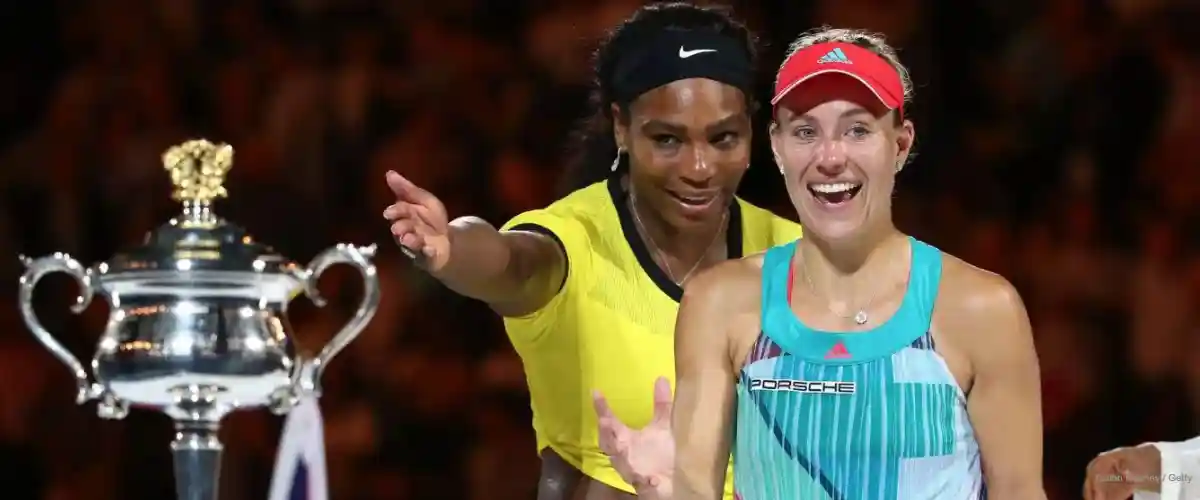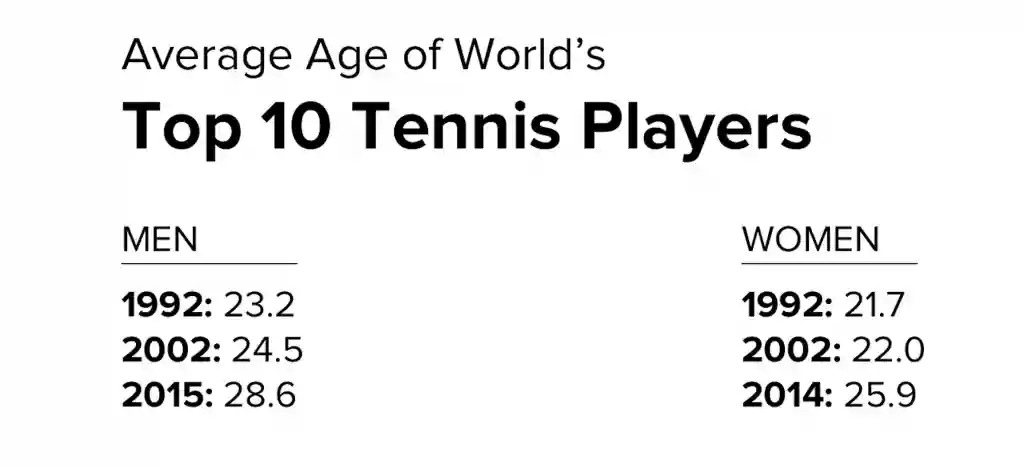Topics
- Article
The New "Old" Tennis Champion

When Serena Williams won Wimbledon this year, she was just two months shy of her 35th birthday, making her the oldest women ever to emerge victorious at a Grand Slam singles event. Williams extended a record she’d actually set 12 months earlier, when she captured the 2015 Wimbledon title at the age of 33.
It comes as no surprise that the greatest female tennis player of all time is still winning Grand Slams well into her thirties. However, it’s not just Serena who’s doing it. Li Na took the Australian Open championship in 2014 at age 31, just her second major title. In 2015, Flavia Pennetta won the U.S. Open at 33, the first Slam of her career. The runner-up was 32-year-old Roberta Vinci, a first-time finalist.
A similar trend is happening with the men as well. Roger Federer reached the 2015 U.S. Open Finals shortly after turning 34. Now 31, Stan Wawrinka took home this year’s U.S. Open championship after winning the French in 2015 and the Australian in 2014. At 29, defending Wimbledon champ Andy Murray recently became the oldest first-time No. 1 ranked player in more than 30 years.
One of my earliest tennis memories is of watching a 17-year-old Michael Chang shock the world at the 1989 French Open as the youngest male Slam winner of all time. The following summer, Jennifer Capriati became the new teen sensation by making her pro debut at 13, while a 16-year-old Monica Seles rose to the No. 2 world ranking (she was No. 1 by the age of 17). In 1997, Martina Hingis was 16 when she won three of the four slams on her way to No. 1. Even Serena was only 17 when she won her first Grand Slam tournament at the 1999 U.S. Open.
Those days of teenage domination are long gone. With improved technology, medicine and nutrition, older players are capable of maintaining higher levels of fitness than ever before, allowing them to succeed at more advanced ages. Take a look at these numbers from USA Today Sports:

Perhaps the best example of today’s “older” tennis champion is the current top-ranked woman, Angelique Kerber. The 28-year-old competed on the tour for 9 years before finally winning her first Grand Slam, in Australia this past January. Kerber began the season at No. 10, but shot all the way up to No. 1 (supplanting Williams) after also capturing the U.S. Open title in September.
In April, Kerber spoke with The Independent about her re-dedication to fitness:
“I’m feeling fitter than I did in previous years … I think in the last pre-season I maybe improved my fitness by two or three percent. It’s given me a lot of confidence when I go into, for example, three-hour matches. It also helps me to recover faster between matches. What also gives me a lot more confidence is that in the biggest moments I can beat very good players.”
Better fitness and smarter training also helped Murray ascend to the top of the rankings. From Sports Illustrated’s Tim Newcomb:
“Training has evolved for Murray over his career, shifting from his days as a scrawny junior trying to hit with the big boys on tour to now knowing the limits of his 29-year-old body and the balance between on-court preparation, rest, intense workouts and the most recent addition to his regimen: flexibility. … By working in flexibility, Murray has created more freedom of movement for on-court points and for when he trains, which also reduces soreness following a match. ‘I wish I had done this when I was younger,’ he says. ‘I wish I had done more. I focused on other stuff and that was the thing that got missed. When I was 19 or 20 I could train hard and wake up the next day and feel fine. In my mid-20s, when on tour, things start to hurt a bit more and it is not as easy.’”
Murray’s sentiment should come as no surprise, nor should the fact that he and Kerber are being more careful with their training than they did when they were younger. Here’s what Geoff McDonald, head coach of the Vanderbilt Women’s tennis team, told WHOOP about the habits of his players:
“We invested in WHOOP to help our athletes understand the importance of rest and recovery to maximize performance. Several of our players were prone to overtraining, burning the candle at both ends with long, highly intense training sessions [both on the tennis court and in the gym] followed by a long night hitting the books. As college students, they believed they were impervious to performance drops, and they did not understand the importance of recovery and sleep.”
For high school and college kids trying to become the next great tennis pro, there’s a lesson to be learned from today’s elite veterans: Train smarter, not harder.
RELATED: In the NBA, 38 is the new 36